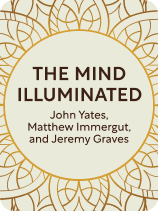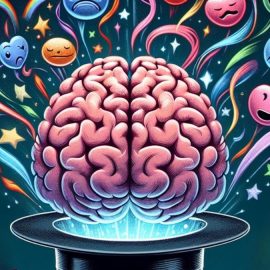

This article is an excerpt from the Shortform book guide to "The Mind Illuminated" by Culadasa, Matthew Immergut, and Jeremy Graves. Shortform has the world's best summaries and analyses of books you should be reading.
Like this article? Sign up for a free trial here.
What is meditation? What are the three meditation states everyone should experience?
According to The Mind Illuminated, there are three meditation states that will help you stay in the moment: concentration, mindfulness, and enlightenment. Each state has unique benefits that anyone can take advantage of.
Let’s look at these states below and how to achieve them.
What Is Meditation?
According to the authors, meditation is training yourself to experience meditation states that improve your life. A meditation state is a way of perceiving and experiencing the world.
Meditation has roots in Buddhism. More than two millennia ago, the Buddha introduced meditation as a pathway to experiencing enlightenment—freedom from suffering. Since then, Buddhist teachers and scholars have further developed Buddhism by reorganizing and adding to the Buddha’s teachings.
(Shortform note: When the authors use the term “meditation,” they’re referring specifically to meditation with roots in Buddhism. Many religions have their own unique kinds of meditation. Furthermore, not all meditation experts conceptualize meditation as a type of mental training. For example, some wellness experts frame meditation specifically as a relaxation technique.)
Meditation State 1: Concentration
According to the authors, samādhi—also known as concentration—involves controlling what to focus on and how long to focus on it. We’ll call what you focus on your focal point.
Concentration is likely something you already do in everyday life—for instance, you might concentrate on listening to an album. When you practice meditation, you strengthen your ability to concentrate on your chosen focal point even as distractions threaten to steal your attention.
(Shortform note: The authors primarily use the term “stable attention” to describe this mental state, emphasizing both the act of focusing (“attention”) and the ability to sustain that focus (“stable”). In this guide, we instead use the term concentration. This term—one you likely already use in everyday life—emphasizes the authors’ point that everyone already has some degree of experience achieving this mental state. Realizing this may make the earliest steps of meditation less daunting.)
When cultivating concentration, most meditators choose their breath as their focal point. Novice meditators often find that distractions such as sounds, bodily sensations, and memories make it hard to sustain their focus on their breath. However, as they hone their concentration skills, they’re eventually able to focus on it for long periods of time.
(Shortform note: In Mindfulness in Plain English, Bhante Gunaratana explores why your breath is an effective focal point. First, your breath is always with you and free to access. Second, your breath is a better focal point than other ever-present, free bodily sensations (like your heartbeat) because you can easily control it (by changing its pace and depth). Therefore, focusing on it presents a valuable challenge—observing and experiencing the breath without trying to control it. This strengthens your overall meditation skills since meditation is all about observing and experiencing the present instead of controlling it.)
Meditation State 2: Mindfulness
Sati—also known as mindfulness—is an advanced type of concentration. The authors say that you’re in a state of mindfulness when these two conditions are true:
- Your concentration on your focal point is strong, meaning you observe or experience it deeply. For instance, strong concentration on your breath might involve noticing subtle sensations, like the feeling of air passing over the roof of your mouth.
- While you maintain your strong concentration, what we’ll call your background awareness is also strong. This is your awareness of sensations and mental experiences beyond your focal point, such as memories, emotions, smells, and sounds.
By saying that mindfulness involves both strong concentration and strong background awareness, the authors advocate for balancing these two types of attention.
According to the authors, when you’re in a state of mindfulness, you experience the benefits of strong concentration and the benefits of strong background awareness. Think of this as experiencing both depth and breadth. Strong concentration on one focal point provides depth—detailed, thorough observation of a single thing. By contrast, strong background awareness provides breadth—a full picture of your present experience.
Meditation State 3: Enlightenment
According to the authors, enlightenment (also called bodhi, awakening, and liberation) is the most important mental state and the ultimate goal of meditation. Like how mindfulness requires strong concentration, enlightenment requires strong mindfulness. As you strengthen your mindfulness, you experience what the authors call insights (vipassanā): epiphanies that dispel your illusions about life, revealing how it really is. These insights, which we’ll call “realizations,” enable you to reach enlightenment.

———End of Preview———
Like what you just read? Read the rest of the world's best book summary and analysis of Culadasa, Matthew Immergut, and Jeremy Graves's "The Mind Illuminated" at Shortform.
Here's what you'll find in our full The Mind Illuminated summary:
- That the true goal of meditation is to reach enlightenment
- The 10 sequential stages you can follow to improve your meditation practice
- Cultural, historical, and scientific insights about meditation






